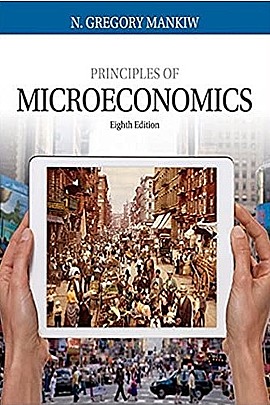
Principles of Microeconomics
With its clear and engaging writing style, Principles of Microeconomics emphasizes only the material that will help you better understand the world in which you live. It helps you be a more astute participant in the economy and gives you a better understanding of both the potential and limits of economic policy. Readers discover interesting coverage of the latest relevant microeconomic developments with real-life scenarios, useful economic facts, and clear explanations of the many ways microeconomic concepts play a role in the decisions that individuals make every day.
MANKIW'S PRINCIPLES OF ECONOMICS
People face trade-offs
The cost of something is what you give up to get it
Rational people think at the margin
People respond to incentives
Trade can make everyone better off
Markets are usually a good way to organize economic activity
Governments can sometimes improve market outcomes
A country's standard of living depends on its ability to produce goods and services
Prices rise when the government prints too much money
Society faces a short-run tradeoff between Inflation and unemployment
TABLE OF CONTENTS
Part I: INTRODUCTION
1. Ten Principles of Economics
2. Thinking Like an Economist
Appendix: Graphing: A Brief Review
3. Interdependence and the Gains from Trade
Part II: SUPPLY AND DEMAND I: HOW MARKETS WORK
4. The Market Forces of Supply and Demand
5. Elasticity and Its Application
6. Supply, Demand, and Government Policies
Part III: SUPPLY AND DEMAND II: MARKETS AND WELFARE
7. Consumers, Producers, and the Efficiency of Markets
8. Application: The Costs of Taxation
9. Application: International Trade
Part IV: THE ECONOMICS OF PUBLIC SECTOR
10. Externalities
11. Public Goods and Common Resources
12. The Design of the Tax System
Part V: FIRM BEHAVIOR AND THE ORGANIZATION OF INDUSTRY
13. The Costs of Production
14. Firms in Competitive Markets
15. Monopoly
16. Monopolistic Competition
17. Oligopoly
Part VI: THE ECONOMICS OF LABOR MARKETS
18. The Markets for the Factors of Production
19. Earnings and Discrimination
20. Income Inequality and Poverty
Part VII: TOPICS FOR FURTHER STUDY
21. The Theory of Consumer Choice
22. Frontiers in Microeconomics
Glossary

